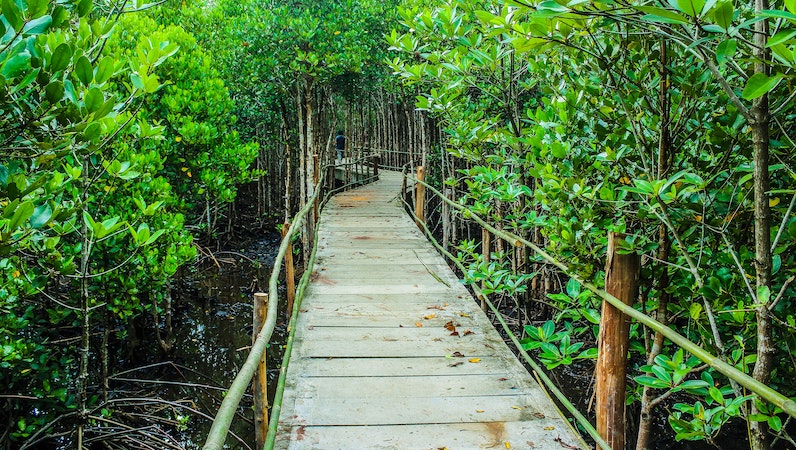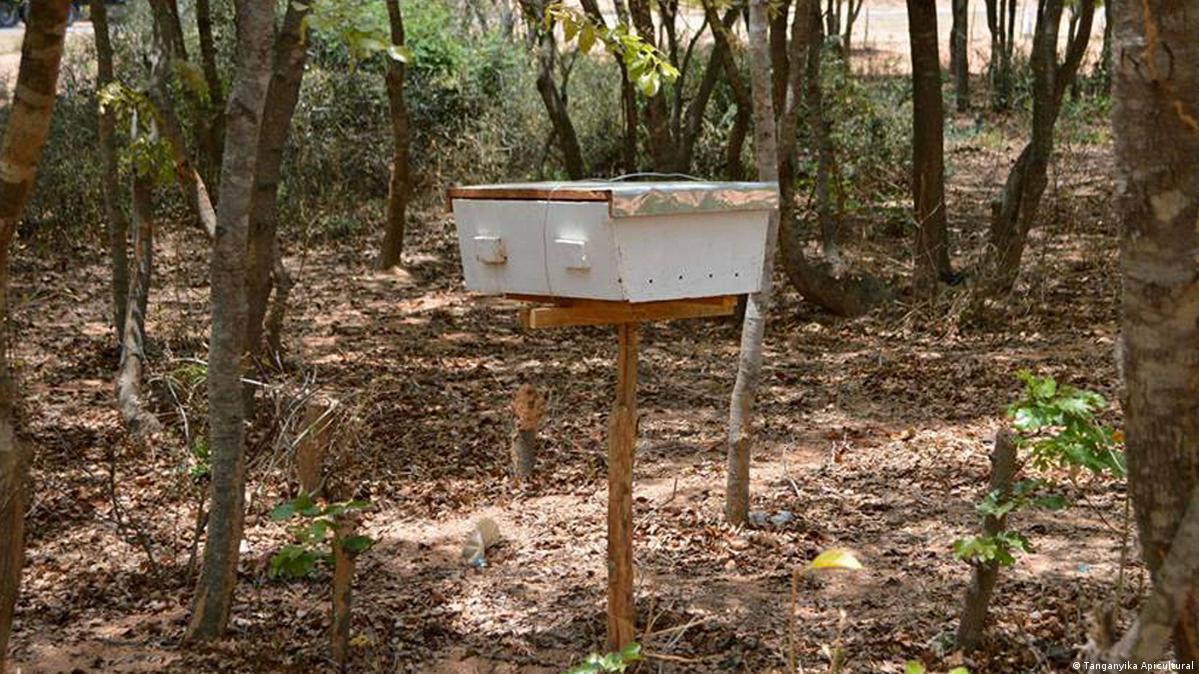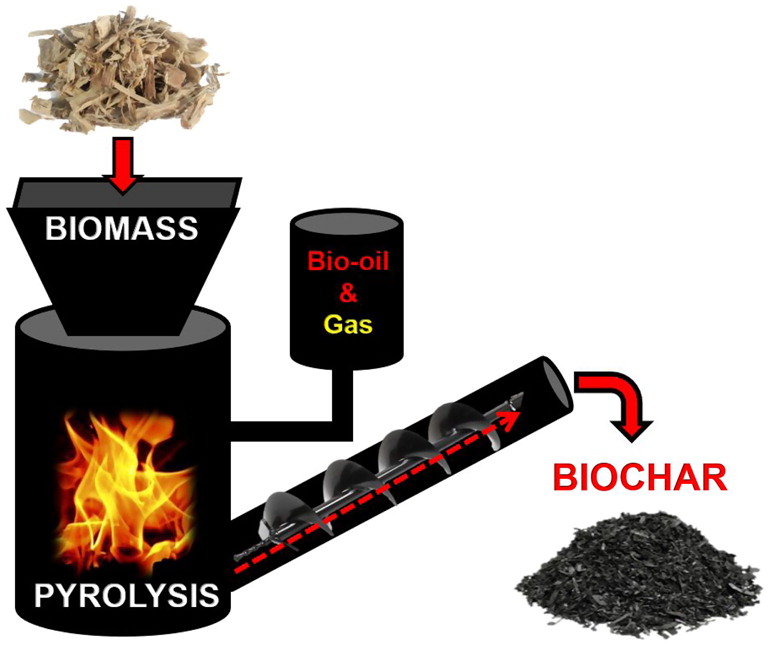Tanzania has among Africa’s most favorable growing conditions for numerous natural and commercial forestry species supporting diverse value chains, including sawn timber, poles, engineered wood products, pulp, and paper. This in turn, supports sectors vital for economic growth, such as construction, furniture, manufacturing energy and rural electrification.
The forest sector has great potential to contribute to the development of the national economy. Despite the immense potential, the contribution of forestry and beekeeping to GDP is estimated to be low (3 to 4%). Several studies have been conducted to assess the contribution of the forest sector to the national economy. Surprisingly, all of these studies have different findings. For instance, the National Forestry Programme (2001-2010) showed the contribution of the forest sector to the GDP to range from 2% to 3% and its contribution to paid employment as 3%. other studies on the contribution of the forest sector to GDP include: Sharma (1992) 13.9%, Mushi (1999) reported a share of 2%,
Milledge and Elibariki (2005) 3-3.4 %, World Bank (2005) 2-3%, and Abdallah (2014) 3-4%. With exception of Sharma’s (1992)GDP estimate which was difficult to ascertain how it was generated, the rest were estimated using short-term studies, small samples and limited data sources with an underestimation of forest products and services. According to NBS (2019), on average the forest sector’s contribution to the National GDP between 2010 and 2017 was about 2.2%and 4% at the current prices respectively.
Forest resources are estimated to cover about 48.1 million (mil) hectares (ha) which is equivalent to 55% of the total surface land area of Tanzania’s mainland (88.6 mil ha). About 44.7 mil ha (93%) of the forestland is classified as woodlands and the remaining 3.4 mil ha (7%) are classified as catchment forests, mangroves, coastal forests and government forest plantations. The total forest cover can be divided into protected and productive forests. Protected areas cover approximately 28 mil ha (58.2%) found in national forest reserves and wildlife-protected areas, while production forests (where regulated harvesting is legally allowed) take up 20.1 mil ha (41.8%).
The distribution of forests in terms of ownership/management includes 21.97 mil ha (45.7%) under Village Governments; 16.6 mil ha (34.5%) under the Central Government; 3.10 mil ha (6.5%) under LGAs; 3.50 mil ha (7.3%) under private sector; 2.88 mil ha (6%) as unreserved forests in general lands.
Further analysis shows that the total forest plantation area is estimated to be 582 729 ha whereas the largest area (210 000-250 000 ha) is in the southern highlands (Asiad, 2016). out of this, the government plantations cover 105 625 ha, large private plantation companies own about 54 708 ha while individual woodlots occupy about 422 396 ha.
Honey production potential in Tanzania is estimated to be 138,000 tons of honey and 9,200 tons of beeswax per annum. However, production stands at about 30,393 and 1,843 tonnes of honey and beeswax respectively from 9.2 million honeybee colonies, which is about 22% and 20% of the potential respectively.
Forests such as wood, NWFPs and ecosystem services contribute significantly to livelihood and the national economy. Wood products include firewood, charcoal, round wood and sawn wood. For example, forests provide about 85% of all the energy consumed in the country. Charcoal is one of the largest forest products in Tanzania, providing substantial employment and supplying dependable energy.
NWFPs consist of fruits, roots, mushrooms fungi, nuts, game meat, medicinal plants, fodder, latex, bark, beverages, dyes, fibres, gums, resins, oils, bee products and services, tannins, aromatics and toxins. Through the use and sale of these products, communities improve their nutrition and livelihoods. Further, in periods of famine, NWFPs serve as a safety net.
At the national level, the contribution of forests to GDP through wood products is estimated at 3.5%. However, this is below the actual value, as non-marketable outputs are not captured. The sector is estimated to provide about three million person-years of employment. Ecosystem services that accrue from the forests include watershed functions, wildlife habitat, soil conservation, biodiversity conservation, Carbon dioxide sequestration, climate amelioration, sustaining cultural values and ecotourism. These services meet regional and international obligations and support other sectors like tourism, agriculture, livestock and energy. For example, about 90% of Tanzania’s hydroelectricity produced at major hydropower stations is fed by water supply from catchment areas within the Eastern Arc Mountains. Given the foregoing importance of forests, it is essential that they be properly accounted for in order to reflect their true value and contribution to GDP.
Forest products that are contributing to the GDP are charcoal, firewood, logs, poles, honey and beeswax, wild fruits, gums and resin, withies, seeds and seedlings.
Charcoal
Charcoal production and consumption are important activities in the forest sector and involve many actors along the value chain. The main actors considered include producers, transporters, wholesalers, retailers and the Government. CHAPOSA estimated that about 96 kg of charcoal was consumed per household per month. However, there are various efforts and initiatives that promoted the use of alternative energy sources (Doggart et al., 2020). Consequently, a report by MNRT (2019) on household energy mix shows that charcoal consumption is about 50% of total energy use (other energy use includes liquid petroleum gas, firewood, electricity and kerosine). Therefore, in this study household charcoal consumption of 48.25 kg/month (which is 50% of 96.04 kg/month) was confidently used. This is comparable to 45.5 kg/hh/month reported by MNRT (2019). Moreover, a bag of charcoal was assumed to weigh 50 kg. Therefore, it is likely that charcoal consumption is about 1,895,248 tonnes/ year almost similar to the 1,816,000 tonnes/year reported by Nyamoga (2019). A bag of charcoal was sold at a price of TZS 7,500. This is equivalent to 284,287,234,050.
Firewood
The HBS of 2017/2018 (NBS and MFP, 2019) and field data were used to quantify the amount of firewood utilized. The HBS estimated that the total number of households using firewood was 6,914,337 and results by rural and urban categories.
According to Preston (2012), 1,653 kg of firewood is consumed by a household per year. Since one headload is 24 kg (Preston, 2012), therefore the 1,653 kg is equivalent to 69 headloads of firewood per household per year. It is assumed that in urban areas, firewood consumed is 50% of the quantities used in rural areas (MNRT, 2019). Therefore, firewood consumption in urban areas is about 34.5 headloads per household per year. On average, one headload of firewood was sold at a price of TZS 881 in rural areas and TZS 3,000 and TZS 6,000 in urban and Dar es Salaam respectively. Therefore, by using the expenditure approach the estimated GVA is TZS 457,167,612,172.
Logs
Logs from small-holder tree growers
According to Kijazi (2020), Southern highland regions with 80% of forest plantations and woodlots have 60,000 tree growers’ households. This implies that the rest of the forest plantations in Tanzania which constitute 20% would have 15,000 households.
Logs from Central Government plantations
Data on volume produced, price and costs were obtained from TFS and used to estimate GVA for logs produced by the Central Government. Costs were for supervision during harvesting and forest protection. GVA for logs produced by the Central Government was TZS 39,475,913,775.
Logs from natural forests
About 500,000 m3 to 600,000 m3 of wood was sourced from natural forests (TFS, 2020), and similar data (457,000 m3) were reported by PFP (2018). The annual cost for natural forest protection from TFS was TZS 6,532,325,535 (TFS, 2020). The average price of wood from natural forests is TZS 195,000 per m3. Therefore, GVA for logs from the natural forests was TZS 90,967,674,465.
Poles
Poles are important forest products harvested from woodlots of smallholders and from natural forests. Some of the poles were used for construction and electric transmission. Poles from smallholders’ woodlots were estimated to contribute 18% of value added along the poles value chain (Temuet al., 2021). As such, value added by poles from Central Government plantations were included in logs, and value-added by poles from forest companies was included in the establishments involved in pole treatments.
Poles from smallholders’ forests
There were about 75,000 tree growers’ households in Tanzania. Households’average sales, costs and total households engaged in tree growth were used to estimate gross added values. Therefore, the estimated GVA for poles was TZS 20,164,209,402.
Poles from natural forests
Ten out of 351 households (2.8%) harvested and traded poles from natural forests. Assuming about 70% (8,257,742 households) of 11,796,774 total households were in rural areas, therefore it is likely that about 235,345 rural households were engaging in pole harvesting. Households’ average sales, costs and total households engaged in pole harvesting were used to estimate gross added values. It is estimated that the GVA for poles from the natural forests was TZS 781,323,994,551.
Honey and beeswax
About 6% of rural households (i.e., 495,465) are engaged in honey production (Makonda and Abdallah, 2020). The production of honey per household was about 65 litres. Therefore, 32,401,074 litres of honey were produced in Tanzania. However, since 1 litre equals 1.44 kg of honey then the total honey produced was 46,657,547 kg, equal to 46,657.54 tonnes (Makonda and Abdallah, 2020).
Also, for every 15 kg of honey produced, there is 1 kg of wax is harvested. Therefore, the total wax collected was 3,110,503.14 kg (i.e., 3,110.50 tonnes). The price of bee wax was averaged to TZS 10,000 per kg. The total gross value added for both honey (TZS 112,142,054,049) and bee-wax (TZS 31,105,031,400) were TZS 143,247,085,449.
Wild fruits
Wild fruit collection was not among the main economic activities, however, about 2.85% of households were engaged in the collection and trade of wild fruits, especially in districts located in woodland areas. However, some wild fruits were collected from forest plantations such as wild passion. Other fruits include Vitex mombassae (Msasati), Tamarindus indica, Parinari curatellifolia (Msawula), berries, Tamarindus (ukwaju), baobab fruits (ubuyu) etc. Some of these fruits were collected by women and children while doing other activities in forests such as firewood collection. Field data collected on wild fruits were summarised into income, costs and GVA calculated totalled to TZS 8,969,846,100.
Gum
The key actors of the gums value chain are collectors, traders, merchants and exporters. There are also service providers of TRA, TFS and LGAs.According to Makondaand Abdallah (2020), the price of Acacia gum obtained at a level of collectors ranged from TZS 300 to 350 kg-1 (averaging to TZS 325 per kg). Cess usually ranged from 1 to 5% and royalty was at TZS 750 per kg (royalty was reduced to TZS 300 per kg in 2020). Therefore, it was estimated that gum earned GVA of TZS 1,350,968,162.
Withies
Withies harvesting was not among the main economic activities, however, about 0.5% of households were engaged in harvesting and trade of withies in rural areas. Since 8,257,742 households (NBS and MFP, 2019) were located in rural areas implies that only 41,289 were engaged in withies harvesting and trade. The price of a bundle of withies was found to be TZS 5,000. Field data collected on withies were summarised into income, costs and GVA calculated totalled to TZS 7,163,591,012.
Seeds and seedlings
Seeds and seedlings are produced and traded by the private sector, government, community groups and individuals. The groups and individuals are scattered countrywide; therefore, it was not possible to quantify their production and trade.
Gross value – added for seeds and seedlings per TFS shows Income (TZS) is 3,712,970,014 Costs (TZS) is 1,389,124,754 and GVA (TZS) is 2,323,845,260.




